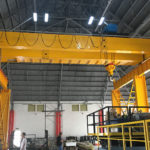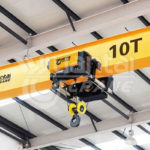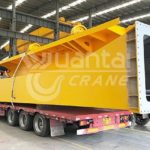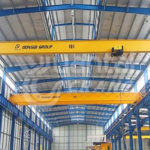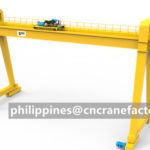Shipyard Gantry Crane Overview
A shipyard gantry crane is a type of crane that is used to lift and move heavy objects in a shipyard. It consists of a horizontal beam, called a gantry, that spans the width of the shipyard, and a trolley that runs along the gantry and carries a hoist. The hoist can be lowered or raised to attach or detach the load, and the trolley can move horizontally to position the load over the desired location. A shipyard gantry crane can have different configurations, such as single girder, double girder, semi-gantry, or full gantry, depending on the size and shape of the load and the available space in the shipyard. A shipyard gantry crane can also have different power sources, such as electric, diesel, or hydraulic, depending on the speed and efficiency required. A shipyard gantry crane is essential equipment for shipbuilding and repair, as it can handle large and heavy components such as hull sections, engines, propellers, masts, and cranes.
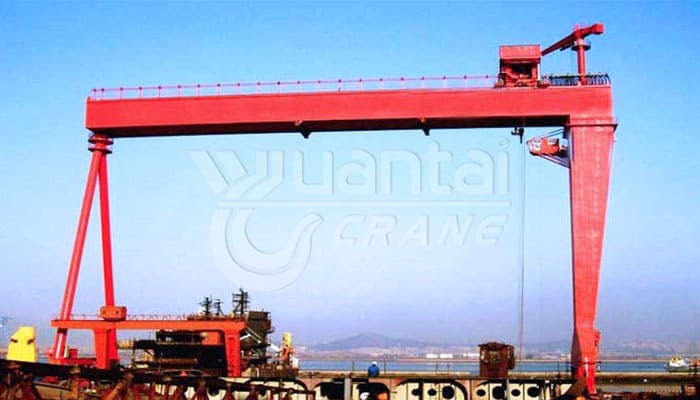
Types of Shipyard Gantry Crane for Sale
There are two main types of shipyard gantry cranes: Single Girder Gantry Crane and Double Girder Gantry Crane. The difference between them is the number of beams that support the lifting mechanism. A single girder crane has one beam, while a double girder crane has two beams.
Single girder cranes are usually cheaper, lighter and easier to install than double girder cranes. They are suitable for lifting loads to 20 tons and span up to 30 meters. They are ideal for small to medium-sized shipyards that need a simple and efficient crane.
Double girder cranes are more expensive, heavier and more complex than single girder cranes. They are suitable for lifting loads to 500 tons and span up to 50 meters. They are ideal for large-scale shipyards that need a powerful and versatile crane.
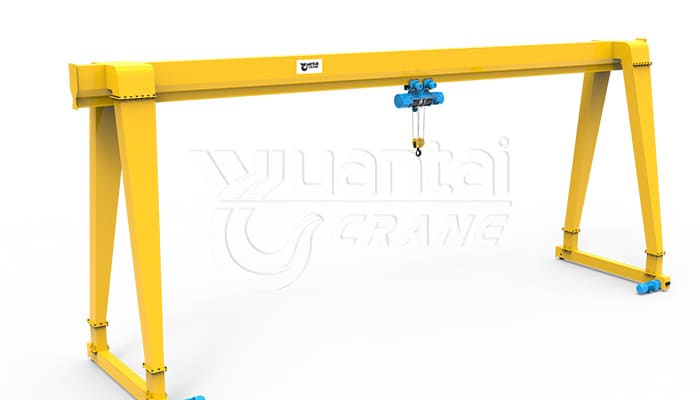
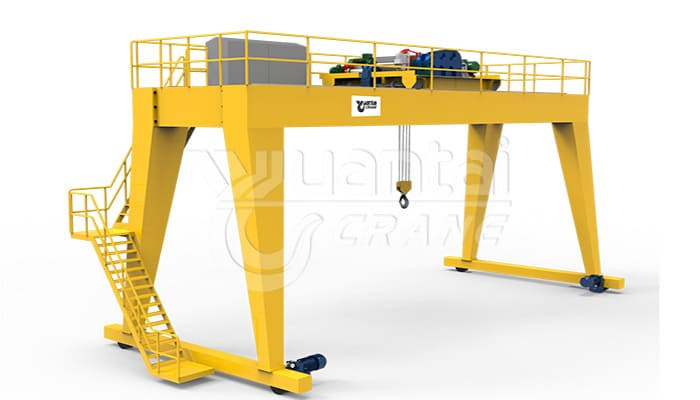
Features of Shipyard Gantry Cranes
Shipyard gantry cranes have many features and benefits that make them indispensable for shipbuilding.
- They can lift and move large and heavy loads with ease and precision.
- They can operate in various weather conditions and environments.
- They can be customized according to the specific requirements of each project.
- They can improve the productivity, efficiency and safety of the ship-building process.
- They can reduce the labour cost, time and risk of accidents.
How to Select the Best Shipyard Gantry Crane?
When choosing a shipyard gantry crane for your project, you should consider the following factors:
- The size and weight of the loads you need to lift and move.
- The span and height of the area you need to cover with the crane.
- The speed and frequency of the lifting and moving operations.
- The budget and maintenance cost of the crane.
- The quality and reliability of the crane manufacturer and supplier.
Based on these factors, you can compare different models and options of shipyard gantry cranes and select the one that meets your needs and expectations. You can also consult with experts or professionals who have experience in using or installing shipyard gantry cranes.
Applications of Ship Building Gantry Crane&Shipyard Gantry Crane
A shipyard gantry crane is a type of crane that is used to lift and move heavy objects in a shipyard. It consists of a horizontal beam, called a gantry, that is supported by two or more legs on either side. The gantry can span the width of a ship or a dry dock and can move along rails or wheels. A hoist, which is a device that can lift and lower loads, is attached to the gantry and can move along its length. A shipyard gantry crane can perform various tasks, such as:
- Loading and unloading cargo from ships or barges
- Lifting and installing ship components, such as engines, propellers, masts, or hull sections
- Repairing and maintaining ships or submarines
- Building or dismantling ships or offshore structures
Shipyard Gantry Crane Maintenance
Shipyard gantry cranes require regular maintenance to ensure their safety and efficiency. Maintenance tasks include inspecting the structural components, electrical systems, hydraulic systems, and mechanical parts of the crane. Some of the common problems that may arise during maintenance are corrosion, wear, fatigue, cracks, leaks, and malfunctions.
- Perform routine inspections before and after each operation of the crane. Check for any signs of damage, deformation, or deterioration on the crane’s components. Report any defects or abnormalities to the supervisor or manager.
- Lubricate the moving parts of the crane regularly to reduce friction and wear. Use the appropriate type and amount of lubricant according to the manufacturer’s specifications. Avoid over-lubricating or under-lubricating the parts, as this may cause problems such as overheating, leakage, or contamination.
- Clean the crane periodically to remove any dirt, dust, grease, or debris that may accumulate on the surface or inside the crane. Use a soft cloth, brush, or compressed air to wipe or blow off the dirt. Avoid using abrasive materials or solvents that may damage the paint or coating of the crane.
- Replace any worn or damaged parts as soon as possible to prevent further deterioration or failure. Use only original or compatible parts from the manufacturer or authorized dealer. Do not use improvised or substandard parts that may compromise the quality or performance of the crane.
- Test the crane’s functions and performance after each maintenance activity to ensure that it is working properly and safely. Follow the manufacturer’s instructions and procedures for testing the crane. Record and document the results of the tests and maintenance activities in a logbook or database.

